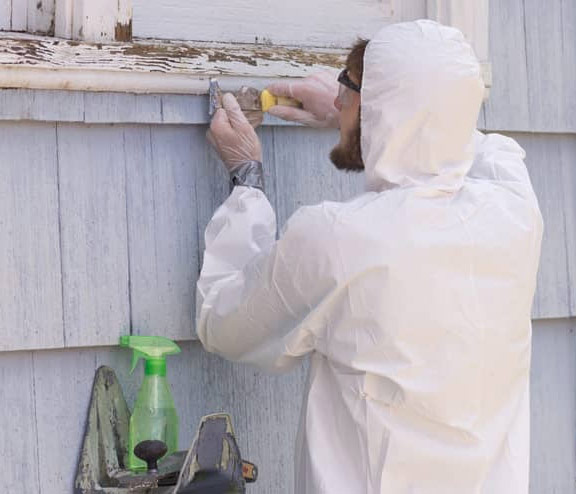DOH & HPD Lead Violation Removal NYC-- Expert Services for Conformity
Comprehensive Guide on Effective Lead Offense Removal Methods
In the world of ecological safety, addressing lead offenses demands a thorough and organized method. This comprehensive overview begins by highlighting the critical first steps of identifying lead threats with advanced analysis and testing approaches. The guide elaborates on the value of adhering to rigorous security methods during the elimination process, including the usage of proper PPE and separating affected locations.
Identifying Lead Dangers
Recognizing lead hazards is an important initial action in mitigating the risks connected with lead direct exposure. Lead, a poisonous steel, can be existing in various environmental mediums, including paint, dirt, water, and dirt.
The initial phase in recognizing lead risks includes recognizing common lead sources within the constructed environment. Structures constructed before 1978 are specifically vulnerable because of the common usage of lead-based paint throughout that duration. Furthermore, dirt contamination can take place from deteriorating exterior paint, industrial emissions, or historical use leaded gasoline.
One more considerable resource is lead piping and pipes components, which can leach introduce drinking water. Durable goods such as toys, ceramics, and imported products may likewise have dangerous lead degrees. Significantly, work atmospheres and hobbies involving lead can track impurities right into homes.
Assessment and Screening
When dealing with lead hazards, reliable assessment and screening are paramount. First evaluation commonly entails a visual inspection to identify potential lead resources, such as degrading paint or infected dirt.

Dirt clean sampling is one more critical method, especially in residential settings. By gathering examples from floorings, windowsills, and other surfaces, this technique supplies understandings right into potential exposure dangers. Dirt testing around structure borders is essential to discover lead contamination that can posture threats, especially to children.
Safe Removal Procedures
Upon finishing comprehensive assessment and testing, executing risk-free removal procedures is the following essential stage in resolving lead dangers. This process guarantees that lead-contaminated materials are effectively and securely gotten rid of, decreasing threat to both workers and locals. The primary step entails separating the damaged area using plastic bed linen and correct sealing techniques to stop the spread of lead dirt.
Workers should don appropriate individual protective equipment (PPE), including respirators, handwear covers, and non reusable coveralls, to minimize exposure. Using specialized devices and wet methods, such as damp sanding or making use of HEPA-filtered vacuum cleaners, decreases the diffusion of lead fragments. It is crucial to stay clear of dry sanding or unpleasant blasting, as these approaches can produce hazardous lead dust.
Garbage disposal is one more important component; all infected materials must be safely nabbed and labeled according to EPA and neighborhood guidelines. Additionally, thorough cleansing of the workspace with HEPA vacuum cleaners and wet cleaning ensures the removal of recurring lead particles.
Post-Removal Confirmation

Verification of effective lead removal, recognized as post-removal confirmation, is crucial to guarantee the security and habitability of the remediated area. This examination makes sure that all well-known sources of lead have been attended to and that no noticeable indicators of contamination remain.
Complying with visit this page the aesthetic examination, environmental sampling is carried out. This entails accumulating dust, dirt, and occasionally water examples from the remediated location. Accredited laboratories analyze these samples to measure lead levels, ensuring they fall below the security limits developed by governing bodies such as the Epa (EPA)
Additionally, air high quality testing may be performed to detect airborne lead fragments, particularly in cases where comprehensive lead-based paint removal or renovation has actually happened. The results of these examinations give measurable click reference information verifying that the lead levels are within allowable restrictions.
Inevitably, post-removal confirmation serves as an essential checkpoint, confirming the efficiency of the lead abatement efforts and protecting the health and wellness of passengers and visitors.
Preventative Measures and Maintenance

A crucial safety net includes using lead-safe certified service providers for any renovation, repair service, or painting tasks. These professionals are learnt techniques that lessen lead dirt and debris. In addition, maintaining colored surfaces to prevent damaging or peeling is important, as wearing away paint can release lead fragments into the look at this site setting.
Educational initiatives targeting home owners and occupants regarding the risks of lead and the importance of reporting any kind of potential threats can even more boost preventive initiatives. Regular cleaning making use of HEPA vacuums and damp wiping methods can considerably reduce lead dirt buildup.
Verdict
In summary, reliable lead infraction elimination demands a precise method encompassing thorough evaluation, precise testing, and stringent removal procedures. Making sure safety and security with appropriate isolation and personal protective devices continues to be critical. Post-removal verification using environmental sampling and air high quality screening confirms compliance with well-known safety and security standards. Continuous inspections and maintenance are essential to mitigate future lead threats, thereby securing public health and guaranteeing continual conformity with regulatory demands.